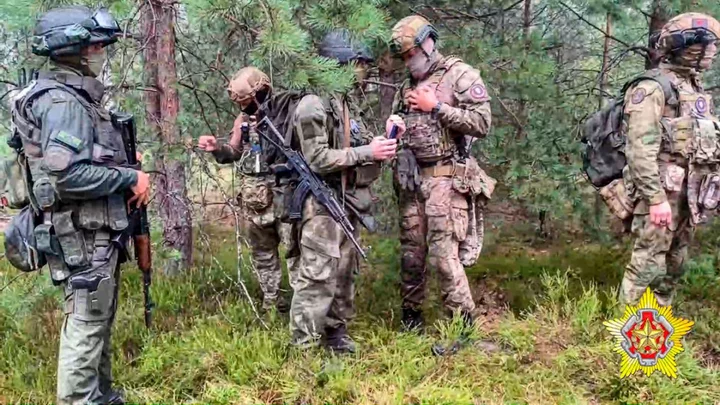
Why are Wagner mercenaries in Belarus – and would they try to invade Poland?
Thousands of Wagner mercenaries have arrived in Belarus since the group’s failed mutiny against Moscow led by its founder Yevgeny Prigozhin – leading to Nato member Poland reinforcing its eastern border against the “potential threat” they pose. Belarusian president Alexander Lukashenko welcomed Wagner forces into the country after brokering a deal between the Kremlin and Mr Prigozhin, which stopped the mercenaries’ march on Moscow about 125 miles from the capital. He and Russian president Vladimir Putin have spoken about the mercenaries on a number of occasions, including during two days of talks over the weekend and into Monday, the Kremlin said on Tuesday. The Wagner chief called the mutiny a “march of justice” to oust the top military leaders. The mercenaries faced little resistance and downed at least six military helicopters and a command-post aircraft, killing a number of Russian troops. The revolt posed the most serious threat to President Putin during his 23-year rule, eroding his authority and exposing the cracks in the military, and changing the direction of the Kremlin’s 16-month invasion of Ukraine. Here’s a look at where we are now: How many Wagner fighters are in Belarus, and where are they? Between 3,450 and 3,650 soldiers have travelled to a camp close to Asipovichy, a town about 140 miles (230km) north of the Ukrainian border, according to Belaruski Hajun, an activist group that tracks troop movements within the country. Satellite images show that about 700 vehicles, along with construction equipment, have also arrived in Wagner convoys to Belarus, Belaruski Hajun said. Mr Prigozhin also registered a “real estate management company” in Belarus last week under the name Concord Management and Consulting in Belarus. Documents analysed by independent Belarusian media outlets showed that the company’s registered address was in the same village as the Wagner mercenary camp. Why is Poland so concerned? The bigger issue for Poland is that the Belarusian Defence Ministry has made clear over the last week or so that the mercenaries are providing training for Belarusian soldiers, including at training grounds close to the Polish border. “Wagner fighters who have really been in the heat of combat are passing on valuable information and experience to our servicemen,” the Belarusian Defense Ministry said in a statement. One of the ranges is in Brest, about three miles (5km) from Poland’s eastern border. Warsaw said it was ready for “various scenarios as the situation develops”, having started moving around 1,000 of its own troops towards the border earlier this month. According to claims made in a post by a senior Wagner commander, known by his nom de guerre “Marx”, which was republished by Wagner’s Telegram channel, up to 10,000 fighters “have gone, or will go” to Belarus – although the accuracy of that statement is difficult to verify. Poland’s Defence Ministry said the country’s borders were secure. In response to Warsaw reinforcing its border, the Kremlin tried to paint it as an “aggressive” move – despite Moscow’s invasion of Ukraine being the ultimate genesis of it. The Belarusian interior minister, Ivan Kubrakov, met Wagner commanders at a training centre to draw up a “clear plan of action”, a statement said. “In view of the difficult situation near the republic’s borders, it is especially important to be ready to respond to potential challenges and threats,” Mr Kubrakov said. He was quoted as hailing the mercenaries’ “practical experience” following their months-long experience of combat in eastern Ukraine, notably in bloody battles such as those that have taken place around the eastern city of Bakhmut. Would Wagner troops try to invade Poland? It would be foolish. With Poland being a Nato member, crossing the border could bring Article 5 of the alliance’s treaty into play. It states that an attack on one member state is considered an attack on all members. Given Mr Putin’s talk about military action against Belarus being on a par with attacking Russia, Wagner forces heading into Poland is the last thing either Mr Putin or Nato needs. However, that has not stopped the Belarusian leader, Mr Lukashenko, from stirring the pot. In a meeting with the Russian president on Sunday, Mr Lukashenko said that Wagner troops were “stressing [him] out” by calling for “an excursion” into Poland. He said that his government in Minsk was “controlling” the situation by keeping the group in the centre of the country. “They are asking to go west ... to go on a trip to Warsaw ...” Mr Lukashenko told Mr Putin. “But of course, I am keeping them in central Belarus, like we agreed.” It suits both Mr Putin and Mr Lukashenko to have Europe worry about its borders. It allows both men to keep talking tough on the international stage – and play to voters at home. The remarks have largely been dismissed by experts, with the American Institute for the Study of War – which monitors the fighting in Ukraine – saying that Wagner troops there could not threaten Ukraine and Poland. “There is no indication that Wagner fighters in Belarus have the heavy weaponry necessary to mount a serious offensive against Ukraine or Poland without significant rearmament,” the think tank said in a statement. The deputy head of Ukraine’s Main Intelligence Directorate, Vadym Skibitsky, also said that there was no “direct threat” from Russian mercenaries in Belarus, but that Kyiv would be keeping a close eye on the Wagner fighters. “Our assessment is very simple: today there is no direct threat [from Belarus], but we are ready. We are monitoring everything related to the so-called Wagner missile defence system,” he told journalists, according to the directorate’s Telegram channel. Read More The Body in the Woods | An Independent TV Original Documentary The harrowing discovery at centre of The Independent’s new documentary Extremist attacks wounded Paris. Here's why the city turned to the 2024 Olympics to heal Mali's army and suspected Russia-linked mercenaries committed 'new atrocities,' rights group says Monitoring group says thousands of Wagner mercenaries have arrived in Belarus since failed uprising
2023-07-25 22:19
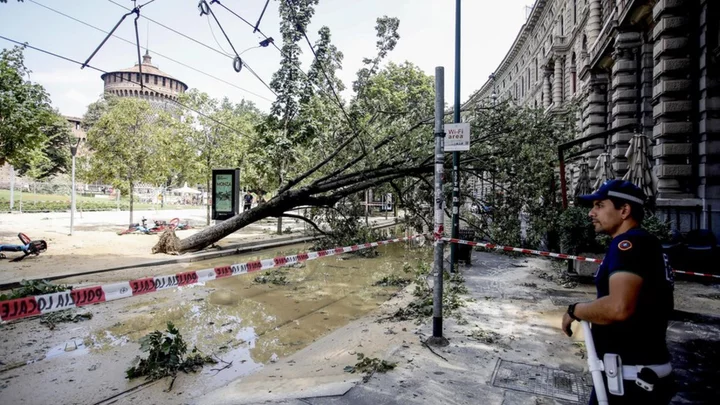
Storms ravage northern Italy as Sicily burns
Torrential rain and hailstorms have caused damage in the north while Sicily battles extensive wildfires.
2023-07-25 21:55

Rhodes evacuation was 'like something from a film', says Devon mum
Amy Walker and her family, from Dawlish, are hoping to fly back to the UK later.
2023-07-25 21:24

Putin signs off law banning Russians from changing gender in latest blow to LGBT+ community
Vladimir Putin has signed a new controversial legislation banning surgical gender reassignment in Russia in yet another blow to the country’s LGBT+ population. Crackdowns against the LGBT+ community and gender minorities in the country have only gathered pace ever since the full-scale invasion of Ukraine last year as the Russian president seeks popularity among citizens. The latest move by Mr Putin on Monday marks Russia’s final step in rendering gender-affirming procedures illegal and depriving its transgender population of their right to access gender-reassignment services. The bill, cleared unanimously by both houses of the Russian parliament and signed by Mr Putin, now bans any “medical interventions aimed at changing the sex of a person” along with changing one’s gender in official documents and public records. Under the bill, exceptions will only be made for a permissible list of medical interventions “related to the treatment of congenital physiological anomalies in children”. The list of these “anomalies in children” will be drawn up by the Kremlin. Couples who transitioned to their new genders after they adopted children will have their marriages annulled. The law thus bans them from becoming foster parents. The regressive legislation has stemmed from the Kremlin’s crusade to protect what it calls are the country’s “traditional values” and according to Russian lawmakers, it is meant as a safeguard against “Western anti-family ideology”. Some lawmakers have dubbed gender transitioning “pure satanism”. State Duma speaker Vyacheslav Volodin said the decision to pass the bill “will protect our citizens and our children” after it was set to undergo its third reading. The bill described gender reassignment as “the path leading to the degeneration of the nation”. The future remains bleak for Russia’s transgender population, which earlier had access to gender-reassignment surgeries and treatments like hormone replacement therapy. A transgender man in Russia, identified as Alexei, said he always had plans to change the gender label on his passport, but is now enduring “hell”. The 23-year-old told The Moscow Times that he is in panic, while stating that the process of his gender transition was already lagging as he was living on his own since he turned 18. He also told the newspaper that he did not have enough money, but will now have to start urgently. Russia ranked 46 out of 49 European nations in advocacy group Rainbow Europe’s annual LGBT+ rights rankings. The country’s politicians are “harming transgender and intersex people by continuing to deploy cynical ‘family values’,” according to Human Rights Watch. Read More Russian president signs legislation marking the final step outlawing gender-affirming procedures The upper house of Russian parliament approves a ban on gender changes Russian lawmakers pass a bill outlawing gender-affirming procedures to protect 'traditional values' Parents take on struggle for trans rights for their kids and others in conservative Poland Spain votes in general election that could see it become latest EU country to veer to the right
2023-07-25 20:21

Rhodes honeymoon 'wrecked' after hotel evacuation
The couple from Stoke-on-Trent said their holiday had been a "rollercoaster".
2023-07-25 19:45

Binance to Scale Up Services on New Japan Platform in August
Binance will roll out full services on its new platform for Japan in August, the crypto exchange’s founder
2023-07-25 17:25
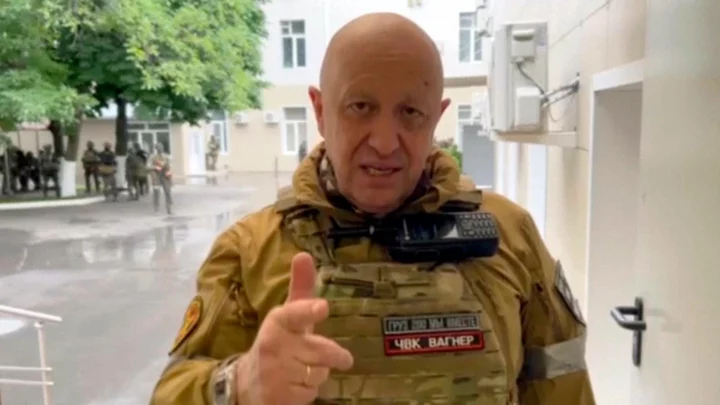
Russia-Ukraine war – live: Putin launches fresh drone strikes on Kyiv as air raid sirens wail across capital
Russia launched a fresh wave of drone strikes on Kyiv and other parts of the country early on Tuesday morning, Ukraine has said. The Kremlin used Iranian-made Shahed drones to attack Kyiv for the sixth time this month, but all were shot down, Serhiy Popko, head of the Kyiv military administration, said. Air raid sirens wailed across the capital and attacks were also reported in the north and centre of Ukraine but none in the south. There were no immediate reports of casualties or damage to buildings. Air force spokesperson Yuriy Ihnat said air defences had been engaged in three regions in the north of the country. “About 10 drones were recorded, the information is being clarified,” he told Ukrainian television, adding that up to five were destroyed. Earlier, thousands of Wagner group mercenaries have arrived in Belarus since the group’s short-lived rebellion, a military monitoring group said. Between 3,450 and 3,650 soldiers have travelled to a camp close to Asipovichy, a town 230 kilometres (140 miles) north of the Ukrainian border, according to Belaruski Hajun, an activist group that tracks troop movements within the country. Read More Who is Yevgeny Prigozhin? The Wagner Group mercenary chief who rebelled against Putin Monitoring group says thousands of Wagner mercenaries have arrived in Belarus since failed uprising Wagner mercenaries training Belarus special forces just miles from border with Nato-member Poland
2023-07-25 17:17

Asbestos, Bailouts and a Half-Built Mall Show UK Crisis in Cheap Rentals
About 40 minutes from the City of London financial district, a sign in the town of Laindon once
2023-07-25 16:59
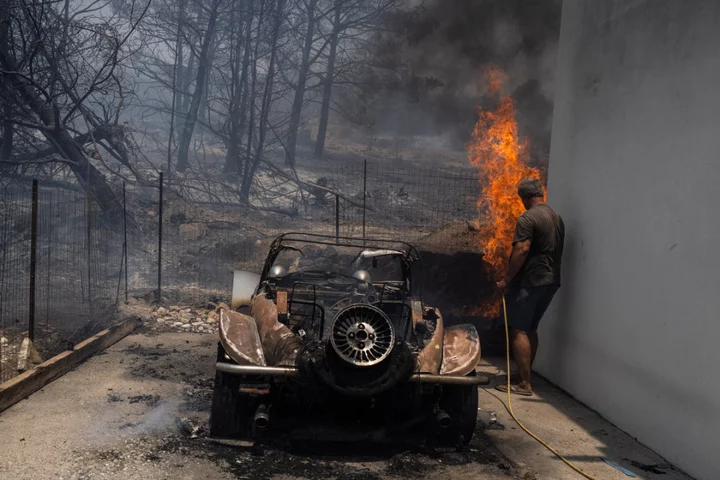
How long will the wildfires last in Greece?
Evacuations are set to continue in Greece as Corfu and Evia have become the latest Islands to issue orders while the country grapples with the devastating wildfires. The Greek fire service has said around 2,500 people have evacuated from Corfu so far. Thousands of people have also been forced to leave their homes and hotels - with those in Santa, Megoula, Porta, Palia Perithia and Sinies being told to evacuate to Kassiopi. A spokesperson from the Met Office told The Independent: “Temperatures on Rhodes are likely to peak on Wednesday, and could be close to 39C in some spots. Temperatures are then expected to move back towards average for the time of year later in the week, likely around 30C. “However, windy conditions could impact efforts this week. There are some northwesterly winds today, with these likely to ease on Tuesday and Wednesday. “However, a return of windy weather is possible later in the week, albeit accompanied by that drop in temperatures,” the Met Office added. What will the weather be like this week in Greece? According to the Met Office website, the temperature in Rhodes will be as follows: Monday 24 July - Highest temperature: 36C and Lowest: 31C Tuesday 25 July - Highest: 37C and Lowest: 28C Wednesday 26 July - Highest: 39C and Lowest: 27C Thursday 27 July - Highest: 36C and Lowest: 23C Friday 28 July - Highest: 34C and Lowest: 24C Saturday 29 July - Highest: 32C and Lowest: 22C Sunday 30 July- Highest: 33C and Lowest: 24C How long will the wildfires last? The climate crisis is increasing the risk of larger, more intense and erratic wildfires around the world due to hotter and drier conditions. Other factors also play a role including soil moisture levels, and the presence of vegetation which acts as fuel for fires. “It’s important to note that these wildfires are happening in environments that are naturally prone to fire during hot and dry summers, with vegetation that is highly adapted to live with fire”, Dr Matthew Jones, NERC Independent Research Fellow, Tyndall Centre for Climate Change Research, School of Environmental Sciences, UEA, said in a statement. Dr Jones added that under climate change and frequent changes to weather conditions across the globe, fires are more likely to break out and “also burn so intensely and synchronously across the Mediterranean.” “The Mediterranean has seen a dramatic increase in the frequency of the hot-dry conditions that were considered extreme at the end of the last century, and these increases are expected to accelerate for each added degree of warming in future,” he noted. According to the Joint Research Centre, last year was the second-worst wildfire season in Europe. In 2022, damages exceeded those of 2021, as per data from the EFFIS - an advanced report on Forest Fires in Europe, the Middle East and North Africa. The EFFIS looked at fires in 45 countries and found that these places suffered from 16,941 fires that burnt 1,624,381 hectares. Looking at just European countries, July 2022 was the month when the most significant proportion of damage occurred in Spain, Portugal, France, Italy and Greece. According to Safer Scotland’s Wildfire Operational Guidance, a wildfire can burn for a “period of time” and this is heavily dependent on the landscape, which contributes to how fast the fire might move. The “behaviour” of the wildfire depends on the following factors: the area, its combustibility and arrangement, the arrangement of the area, the weather and time. Dependent on stable or unstable weather conditions the Wildfire Operational Guidance said time “can have a positive or negative effect on fire development throughout the day and this will bring both advantage and disadvantage to firefighting operations.” Space is another important factor as the area in which the fire is burning brings changes to the shape of the fire, altering the fire’s alignment. For example, as fire changes its location and moves across the area “topographical and climactic conditions will work for and against the first altering its intensity and speed.” What impacts does fuel have on wildfires? When a wildfire occurs, the main source of fuel is vegetation. This type of fuel, its size and the way the vegetation is arranged across the landscape will affect the way the fire burns. The Wildfire Operational Guidance has said the size and shape of the fuel are important especially “in regard to their ease of ignition. Smaller fuels, referred to as ‘fine fuels’, are more receptive to fire, while larger or more coarse fuel types generally rely on their interaction with fires in finer fuels before they will ignite.” Fine fuels are considered to be those with a diameter of up to 6mm, this includes grass, small stems and the leaves of low-lying shrubs. These fine fuels can also be found in large quantities in plants - such as needles on conifer trees. “Fuels that are over 6mm in diameter are described as ‘coarse fuel’ and include twigs, branches, and tree trunks,” the guidance has said. Fine fuels can affect the intensity of the fire, the rate and motion of the fire, the flame length, the fire activity and increased ignitions caused by spot fires. When asked about how long the wildfires might last in Greece, Jim Dale, founder and senior Meteorlogical Consultant at the British Weather Services told The Independent: “For as long as there is ‘fuel’ as in combustible brush. The wind is the enemy as far as people and infrastructure are concerned; there is no sign of rain. “The two main fire zones of Rhodes and Corfu will almost certainly be added to as the Mediterranean basin continues to bake with record and near-record temperatures.” Read More Greek fires ‘big warning’ for tourists to Mediterranean, says climate expert Greece fires – live: Corfu evacuations begin as tourists fleeing Rhodes inferno spend second night in airport Greece wildfires: Rhodes tourists sleep on airport floor awaiting evacuation
2023-07-25 16:55

ECB Hiking Sends Corporate Loan Demand Down Most on Record
Demand for loans among companies in the euro zone plunged by the most on record in the second
2023-07-25 16:47

Euro zone firms slash loan demand to lowest on record: ECB poll
FRANKFURT Euro zone firms' demand for loans dropped to the lowest on record last quarter and a further
2023-07-25 16:28
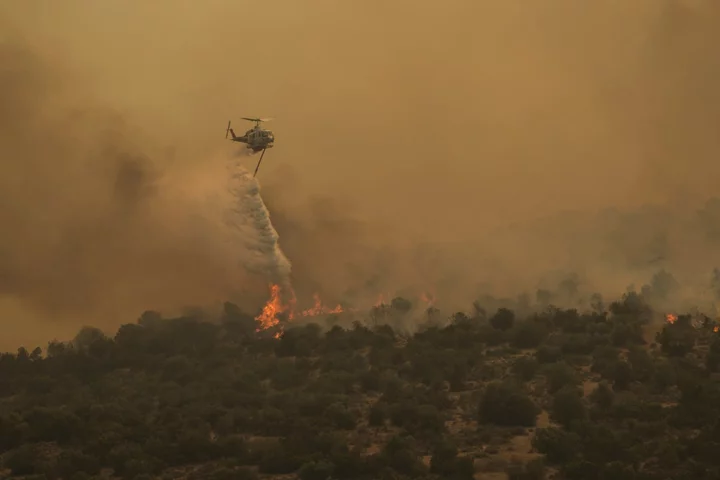
Greece fires: Which islands are affected? Wildfires in Corfu, Rhodes, Evia and Zante explained
Authorities in Greece have issued fresh evacuation orders for parts of Corfu as wildfires erupted on the island. Fires in Rhodes have already forced 19,000 people to leave their homes as holidaymakers said they walked for miles in scorching heat to reach safety. "The smoke was coming. So we all set off on foot. I walked 12 miles (19 km) in this heat yesterday. It took me four hours," British tourist Chris Freestone told the Reuters News Agency. Sea evacuations have now begun from a beach in Corfu to transport individuals fleeing from the fires on the island. Around 59 people were evacuated from Nissaki Beach on the northwest coast, the Greek Coast Guard has said. The evacuation was carried out using six coast guard vessels and nine private vessels. People in Santa, Megoula, Porta, Palia Perithia and Sinies were told to evacuate to Kasiopi due to the raging fires. The Greek government’s Emergency Communication Service has said: “In Rhodes, the Civil Protection forces continue to fight the flames non-stop. Since the first light of day, 10 aircraft, and 8 helicopters, of which 2 are coordinating, have taken off and are operating consecutively. “Regarding the ground forces, there are 266 firefighters, 16 groups of infantry departments, 49 firefighting water vehicles, as well as hundreds of volunteers who support the efforts of the firefighters.” As the wildfires rage on, here is everything you need to know about how a wildfire evacuation protocol works What is a wildfire? The Food and Agriculture Organization of the United Nations (FAO) describe a wildfire as: “Any unplanned and uncontrolled wildland fire that, regardless of ignition source, may require suppression response or other action according to agency policy.” How long does a wildfire last? The National Operational Guidance (NOG) has said a wildfire will burn over a period of time in areas that provide the space over which the fire can move. The NOG said the behaviour of the wildfire is dependent on a number of variables, these include: “its movement across the landscape” which “brings instability within the fire environment caused by changes to the available fuel” as well as “its combustibility and arrangement, the shape of the topography and the effects of weather.” According to the Guinness World Records, the longest wildfire was the Chinchaga Fire in 1950 which grew out of control and ended five months later on 31 October in Alberta - in that time, it burned approximately 1.2 million hectares (3 million acres) of boreal forest. When should you evacuate? According to Readyforwildfire.org, people should leave as soon as an evacuation is recommended by emergency services. Make sure you leave as soon as you receive the news and do not wait for authorities to come to you or to be ordered directly by authorities to leave. “Evacuating the forest fire area early also helps firefighters keep roads clear of congestion, and lets them move more freely to do their job. In an intense wildfire, they will not have time to knock on every door. If you are advised to leave, don’t hesitate,” readyforwildfire.org has said on its website. Here are some steps you can take: Emergency services will know exactly which areas will need to be evacuated and which escape routes you can take, so be on high alert. Be sure to follow the orders authorities give you. Always stay informed, you can do this by checking the latest on your phone, on social media, radio or television. Officials may direct you to a temporary assembly point, where you will be transferred to a safe location. Readyforwildfire.org has said on its website that people should not return to their homes until fire officials determine it is safe. “Notification that it is safe to return home will be given as soon as possible considering safety and accessibility,” it added. Does the UK government help if you’re affected by a crisis abroad? The official government website has said the help the Foreign, Commonwealth & Development Office (FCDO) can give may be limited. It said before you travel you should: Make sure you are covered by travel insurance. Find out if your holiday is financially protected and what your flights are during your holiday. There has been a Crisis Management Unit set up to respond to the situation in Rhodes. They can be contacted at +30 210 368 1730 / +30 210 3681259 / +30 210 3681350. However, people have been advised to contact their airline or travel operator who can assist with a return to the UK. The government website has also said during hot temperatures, people should take extra caution and follow NHS guidelines on how to cope during hot weather. What have airlines said? Jet2 and Tui have cancelled all flights to Rhodes. The Jet2 planes were scheduled to depart full of tourists bound for the Greek island. But the planes were empty and will be used to evacuate holidaymakers fleeing the blaze. On Sunday (23 July), Jet 2 put out a statement on Twitter and said they are “keeping the situation under constant review”. In its full statement, the airline said: “The situation in Rhodes continues to evolve quickly and our absolute priority is the health, safety and well-being of customers and colleagues in the affected areas. We can confirm that: Our in-resort teams are working hard to comply with the guidance of local authorities, and we are continuing to bring more customer helpers and local authorities colleagues to the area.” The airline said it will continue to ask customers in affected areas to follow the advice of the local authorities, as well as “staff in their hotels” It said it was “contacting customers as quickly as possible. The statement continued: “Due to these extraordinary circumstances, we have cancelled all flights and holidays that are due to depart to Rodes up to and including Sunday 30th July. We believe this is the right thing to do for everything, and we will be contacting affected customers with regard to their refund or rebooking options. “We will fly those aircraft to Rhodes with no customers on board so that we can continue to bring customers back to the UK on their scheduled flights.” TUI has also put out a statement and said their teams are “working hard with local authorities in Greece to ensure the safety and wellbeing of all our customers currently on holiday in Rhodes and impacted by the wildfires.” Read More Greece wildfires: Holiday and travel advice as Jet2 and Tui flights cancelled amid extreme weather UK airlines still selling tickets to Rhodes despite wildfire inferno Greece fires – live: Corfu evacuations begin as tourists fleeing Rhodes inferno spend second night in airport How long will the wildfires last in Greece? Where are the fires in Corfu and Rhodes? Map reveals Greece wildfires Michael Gove going on holiday to Greek island currently being evacuated
2023-07-25 15:59
